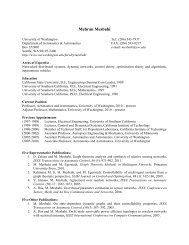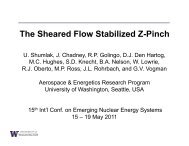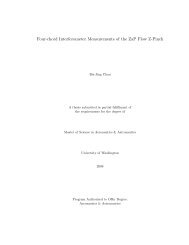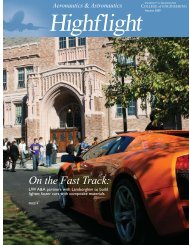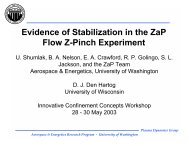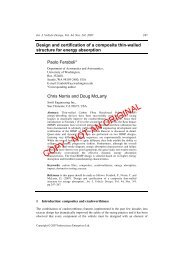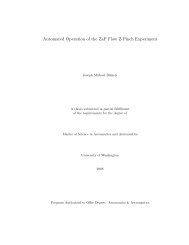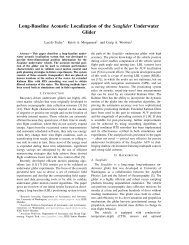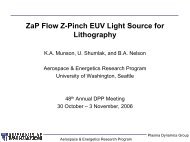Distributed Reactive Collision Avoidance - University of Washington
Distributed Reactive Collision Avoidance - University of Washington
Distributed Reactive Collision Avoidance - University of Washington
You also want an ePaper? Increase the reach of your titles
YUMPU automatically turns print PDFs into web optimized ePapers that Google loves.
36<br />
Desired<br />
Control<br />
u d<br />
Deconfliction<br />
Maintenance<br />
u<br />
Vehicle<br />
z i<br />
z<br />
Figure 4.6: Block diagram <strong>of</strong> the system when using the deconfliction maintenance controller.<br />
The vector z = [z 1 , z 2 , . . . , z n ] T and z i = [r i , v i ] T . Note that the deconfliction<br />
maintenance block acts as a type <strong>of</strong> saturation on the desired control, u d .<br />
4.2 Deconfliction Maintenance<br />
Once the deconfliction maneuver has been performed and the system is in a conflict-free<br />
state, then the deconfliction maintenance controller can be used to keep the system conflictfree.<br />
This controller allows each vehicle to use its desired control input unless that input<br />
would cause the vehicle to come into conflict with another vehicle. A basic block diagram<br />
<strong>of</strong> this setup is shown in Fig. 4.6.<br />
4.2.1 Control Law<br />
In order to smoothly transition from the desired control to the avoidance control, each<br />
vehicle needs a way to measure how close its velocity vector is to causing a conflict. The<br />
first step is to construct a unit-vector, ĉ, representing the side <strong>of</strong> the collision cone nearest<br />
ṽ (like (4.1), but now in 3D). The vector ĉ is found by rotating ˜r by α around a vector<br />
q = ˜r × ṽ and normalizing:<br />
ĉ =<br />
˜r ( ) q × ˜r<br />
‖r‖ cos α + sin α. (4.17)<br />
‖q‖ ‖r‖<br />
Next, construct a normal vector, e, from the collision cone to the relative velocity vector,<br />
ṽ (see Fig. 4.7). If ĉ T ṽ > 0, then e = (I − ĉĉ T )ṽ, but if ĉ T ṽ ≤ 0 (the vehicles are headed<br />
away from each other), then no normal exists, and the nearest point on the collision cone is



